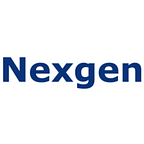It is no secret that today’s retail business is more competitive than ever. Whether you are competing with a store in town or through online shopping, it will be best if you implement strategic planograms for your retail store. Planograms are visual merchandising tools, which help retailers successfully plan their product shelves for store operation success.
In a recent study, when asked about their preferences, most customers preferred to shop in a brick-and-mortar store, since it has a visual appeal where shoppers can see, touch, and experience the products personally. This creates a positive experience in their mind, and they feel it is worth shopping in a store rather than shopping online. That is why making the retail experience enticing is important for retailers. This is exactly what a planogram does. So, let us dig in very deep into these five areas where you need to focus on in stores to boost sales:
Create a winning assortment planning strategy: As a retailer, picking the right products at the right time, and in the right quantities can result in boosting sales in any given season. A solid planogram assortment strategy helps retailers understand customer choices, including what trends they are most likely to purchase, which results in planning and utilizing available shelf space to the maximum. The width or depth of distinct categories and product types should be considered while planning assortments for your store. For example, if you are an apparel retailer with a wide assortment of categories such as jeans, tops, skirts, and shirts, you need to consider the variations in each category, include in size, price, color, and brand to drive the highest conversion rate.
Category management practices to boost sales: Products can be categorized based on similarities in customer likes, market trends, and seasons retail data with planograms will help retailers determine suitable categories to entice customers. For example, aisles in retail stores can be categorized based on beverages, dairy products, baking items, groceries, cosmetics, and other household essentials. Additionally, placing complementary items from various categories together can boost sales. For example, placing baking items like oil, all-purpose flour, and sprinkles with cake molds can improve your customer’s shopping experience since you are providing all items in one place and helping them remember everything they need.
Custom fixtures to make shelves look like a total steal: Retailers can customize their store shelves with visual merchandising experts to fill the right product by analyzing consumer behavior and market trends. Implementing custom-developed fixtures can save retailers time, resources, and training costs. Thus, retail fixtures deliver a significant perspective for introducing and promoting all the items in your store by cleverly displaying them on store shelves. This results in making shelf space more flexible and reducing overall costs.
Aesthetic store layout designs to entice shoppers: When planning your store layout design, you cannot just jump in and design the layout easily. It is best to consider a path to finish the layout design to visually please shoppers. Retailers may use the grid, loop, mixed, diagonal, and angular layouts to create a better shopping experience for the products they sell. For example, most retailers use a loop layout to take shoppers past all available items before arriving at the checkout counter. This gives maximum exposure to the aisles and boost sales.
Proper inventory management to reduce loss of sales: One of the most challenging things in retailing is managing inventory efficiently. Inadequate inventory can negatively affect your retail business. With planogram days of supply analysis, retailers can analyze how many days the inventory will last based on sales data and customer demand. As a retailer, you will know there are some items that will be sold throughout the year and others only on a seasonal basis. For example, during winters, the demand for woolen jackets will be high, and after that, the demand for such items will decrease. So, after winter, you need to strategically place such items for discount sales to reduce the loss of sales.
Managing a retail store is a complex task. But, with the right planogram software, retailers can plan and manage their store shelves, assortment plans, categories, inventory, and layout designs efficiently. This helps to boost retail sales and profitability.
